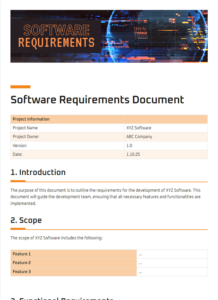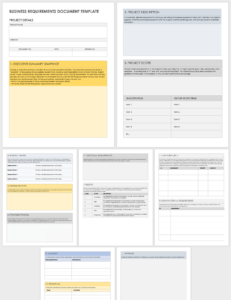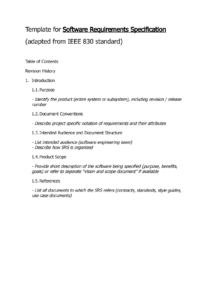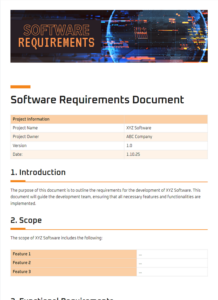As you embark on a software development endeavor, crafting a comprehensive system functional requirements template is paramount to ensure a successful outcome. It serves as a blueprint for system functionality, outlining the specific actions it must perform and the standards it must meet. With a well-defined template, you can streamline communication, mitigate risks, and lay the foundation for a robust and fit-for-purpose system.
A system functional requirements template typically includes sections for identifying the system’s purpose, scope, and functionality. It specifies the inputs, outputs, and performance requirements. By capturing all these details in a single document, stakeholders can align their expectations, ensuring that the system is built to meet their needs.
Understanding System Functional Requirements
System functional requirements define what the system should do without specifying how it will achieve it. They focus on the behavior and functionality of the system, ensuring that it meets the intended purpose. To create effective functional requirements, it’s crucial to understand the system’s intended users, their goals, and the context in which it will be used. Functional requirements are categorized as either mandatory or optional, with mandatory requirements being essential for the system’s core functionality and optional requirements catering to specific user needs.
When drafting functional requirements, clarity and precision are essential. They should be written in a manner that is easy to understand by both technical and non-technical stakeholders. Avoid using vague or ambiguous language, as these can lead to confusion and misunderstandings. Instead, employ clear and concise language, providing specific details about the system’s behavior and performance.
Thoroughness is another key aspect of functional requirements. Aim to capture all essential functionalities and avoid overlooking critical details. Incomplete or inaccurate requirements can lead to gaps in the system’s functionality, compromising its effectiveness. By investing time in developing comprehensive functional requirements, you minimize the likelihood of costly rework and ensure a system that meets the intended purpose.
Finally, ensure traceability throughout the development process by linking functional requirements to other artifacts, such as use cases and test cases. Traceability allows stakeholders to track the implementation and testing of requirements, ensuring that the system meets the specified functionality.
Benefits of Using a System Functional Requirements Template
Employing a system functional requirements template offers numerous benefits throughout the software development lifecycle. It serves as a centralized repository for capturing and managing requirements, facilitating collaboration and communication among stakeholders. By providing a structured framework, it ensures that all essential aspects of the system’s functionality are considered and documented.
A well-defined template reduces the risk of omissions and inconsistencies in the requirements. It also minimizes ambiguity and confusion, ensuring that everyone involved has a clear understanding of the system’s intended behavior. As the project progresses, the template serves as a reference point for developers, testers, and end-users, aligning their efforts with the specified requirements.
Moreover, a system functional requirements template promotes efficiency and productivity. By streamlining the requirements gathering and documentation process, it saves time and effort, allowing teams to focus on building a robust and effective system. It also facilitates change management by providing a centralized repository for tracking and updating requirements throughout the development lifecycle.
Overall, a system functional requirements template is an invaluable tool that lays the foundation for a successful software development project. It enhances communication, reduces risks, and promotes efficiency, ultimately contributing to a high-quality system that meets the intended purpose.
Conclusion
Crafting a comprehensive system functional requirements template is a crucial step in software development. It provides a clear roadmap for system functionality, ensuring that all stakeholders are aligned and that the system meets the intended purpose. By employing a structured template, teams can effectively capture, manage, and trace requirements, reducing the risk of omissions, inconsistencies, and confusion.
Investing time in developing a well-defined system functional requirements template lays the groundwork for a successful software project. It facilitates communication, streamlines processes, and promotes efficiency, ultimately leading to a system that meets the needs of end-users and delivers value to the organization.



